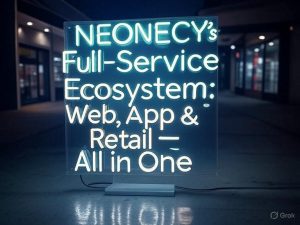In the past two decades, digital transformation has reshaped retail in unimaginable ways. From the early days of eCommerce to the rise of mobile shopping and AI-powered personalization, the evolution has been rapid. But now, a new era is on the horizon — Web3. Often described as the decentralized internet, Web3 has the potential to redefine every aspect of our digital lives, especially how we shop. In this article, we’ll explore the Web3 shopping future, including blockchain, NFTs, smart contracts, and the role of decentralization in reshaping commerce by 2030.
1. Understanding Web3 and Its Core Technologies
To fully grasp the Web3 shopping future, we must understand the technology powering it. Web3 is built upon a few critical components:
-
Blockchain: A decentralized ledger that allows secure, transparent transactions.
-
Smart Contracts: Self-executing agreements coded into blockchain networks.
-
Cryptocurrencies: Digital assets that serve as a medium of exchange.
-
NFTs (Non-Fungible Tokens): Unique digital assets verified by blockchain.
-
DAOs (Decentralized Autonomous Organizations): Community-driven decision-making models.
These technologies will create a new shopping paradigm that emphasizes user control, data privacy, and decentralized ownership.
2. Decentralization and the Empowered Consumer
In today’s centralized systems, corporations control user data, payment processes, and customer experiences. However, the Web3 shopping future will empower consumers to own their data and shop without intermediaries.
Key Benefits:
-
Data Ownership: Shoppers can choose what data to share and monetize it themselves.
-
Peer-to-Peer Transactions: Web3 allows direct transactions between buyer and seller without banks or third parties.
-
Trustless Systems: With blockchain, trust is built into the protocol, reducing fraud and misinformation.
By 2030, consumers may interact with brands directly through decentralized marketplaces, maintaining more privacy and gaining greater value.
3. Tokenized Loyalty Programs and Digital Wallets
Loyalty programs are ripe for transformation. Currently, they are often fragmented and difficult to redeem. With Web3:
-
Brands can issue token-based rewards that are tradable or convertible into real value.
-
Users store their loyalty points in digital wallets alongside cryptocurrencies.
-
These tokens can be used across multiple platforms, enabling cross-brand loyalty ecosystems.
This level of interoperability and ownership will redefine brand-customer relationships in the Web3 shopping future.
4. NFT Integration in Retail
By 2030, NFTs will no longer be limited to digital art. Retailers will use them to:
-
Offer digital twins for physical products, improving authenticity and traceability.
-
Enable virtual ownership in metaverse shopping experiences.
-
Provide exclusive access to collections, communities, or events.
For example, purchasing a high-end sneaker might also come with a digital NFT version usable in virtual worlds. The Web3 shopping future will blur the line between physical and digital ownership.

5. The Rise of Metaverse Commerce
The Web3 shopping future is closely tied to the rise of the metaverse — persistent, immersive digital spaces. Here’s how shopping will change:
-
Virtual storefronts where users can browse, try on, and purchase products using avatars.
-
Smart contracts enable automated and instant transactions.
-
NFTs represent ownership of digital clothing or exclusive merchandise.
This shift will enable more engaging, gamified, and social shopping experiences than traditional eCommerce.
6. Smart Contracts: Automating the Retail Experience
Smart contracts will be foundational in automating and securing transactions. Their use cases include:
-
Automated checkouts: Eliminate delays and errors.
-
Subscription services: Trigger renewals and deliveries based on preset conditions.
-
Dispute resolution: Built-in logic can resolve complaints without human intervention.
With smart contracts, the Web3 shopping future becomes faster, fairer, and more transparent.
7. Supply Chain Transparency and Traceability
One of the most impactful aspects of Web3 in retail is supply chain visibility. Shoppers increasingly demand ethical sourcing and sustainability. Blockchain allows:
-
Full transparency on product origins and manufacturing processes.
-
Instant verification of ethical practices.
-
Real-time tracking of goods.
By 2030, consumers may use a simple scan to verify the origin and journey of a product, building trust in brands and boosting conscious consumption.
8. The Role of Decentralized Marketplaces
Web3 enables the rise of decentralized marketplaces — platforms owned and governed by communities instead of corporations. These offer:
-
Lower fees due to the absence of intermediaries.
-
Equal opportunity for small vendors to compete.
-
Community governance, where users vote on platform rules.
These platforms could challenge Amazon-style monopolies and offer greater inclusivity in global trade, making decentralized markets a major part of the Web3 shopping future.
9. Web3-Powered Social Commerce

Web3 will also change how influencers and creators monetize their reach:
-
Creators can launch token-gated stores for exclusive product drops.
-
Fans can earn tokens by promoting products.
-
Blockchain ensures transparent commission tracking.
This peer-powered approach democratizes influence and allows community-driven commerce to flourish.
10. Challenges and Considerations on the Path to 2030
While the Web3 shopping future is promising, several challenges must be addressed:
-
Scalability: Blockchain networks need to handle massive retail volumes.
-
User Experience: Complex wallets and interfaces must become more user-friendly.
-
Regulation: Legal frameworks for NFTs, tokens, and DAOs are still evolving.
-
Adoption: Businesses and consumers must be educated on the benefits and risks.
Industry-wide collaboration will be essential for overcoming these hurdles.
11. Early Adopters and Case Studies
Several companies are already experimenting with Web3 innovations:
-
Nike: Acquired RTFKT to explore digital fashion and NFTs.
-
Shopify: Enabled merchants to sell NFTs directly.
-
Starbucks: Launched a Web3-based loyalty program using NFT collectibles.
These initiatives offer a glimpse into the mainstream adoption of the Web3 shopping future.
12. Preparing for the Future: What Businesses Can Do Now
To stay ahead, businesses should:
-
Begin integrating blockchain in supply chains and loyalty programs.
-
Educate their teams on Web3 tools and communities.
-
Partner with Web3 platforms and creators.
-
Explore NFT and metaverse strategies for brand engagement.

The earlier a business adapts to the Web3 shopping future, the more competitive it will be by 2030.
Conclusion: A More Transparent, Fair, and Immersive Retail Future
The Web3 shopping future promises a retail world that is decentralized, secure, engaging, and equitable. By 2030, our shopping experiences may look vastly different, shaped by the very technologies that empower users, ensure transparency, and enable direct ownership. While challenges remain, the path ahead is full of opportunity for consumers and businesses alike. Now is the time to explore how your brand can thrive in the era of Web3.





